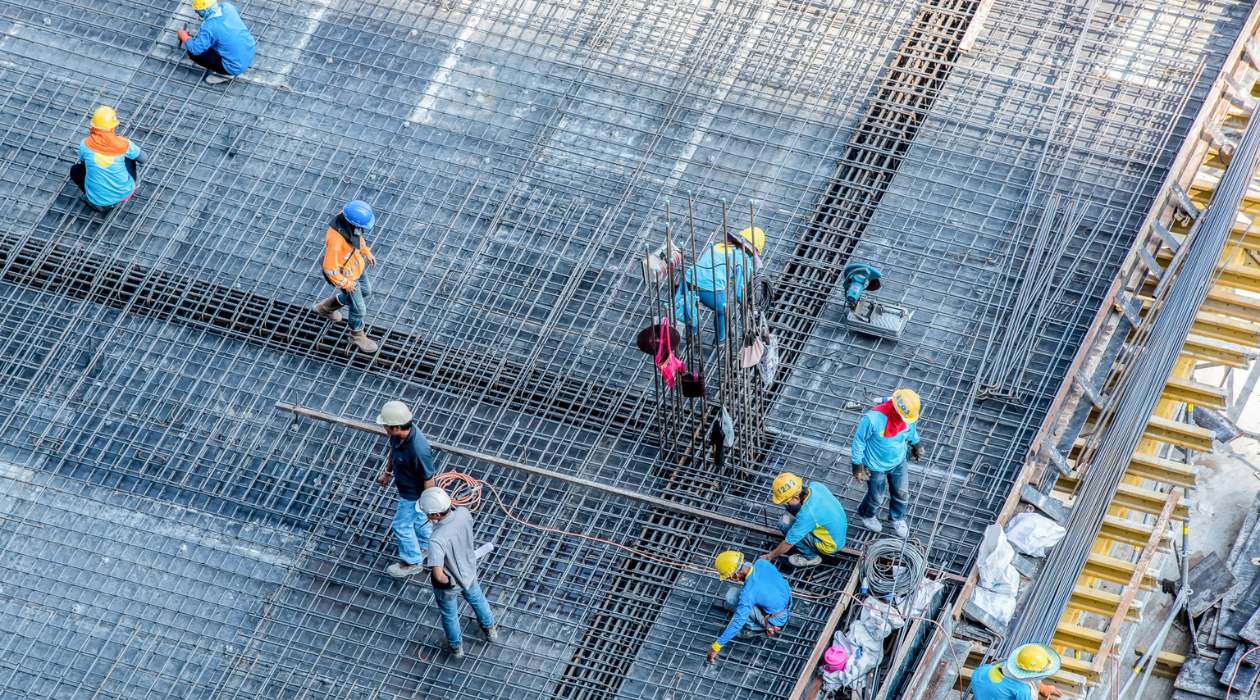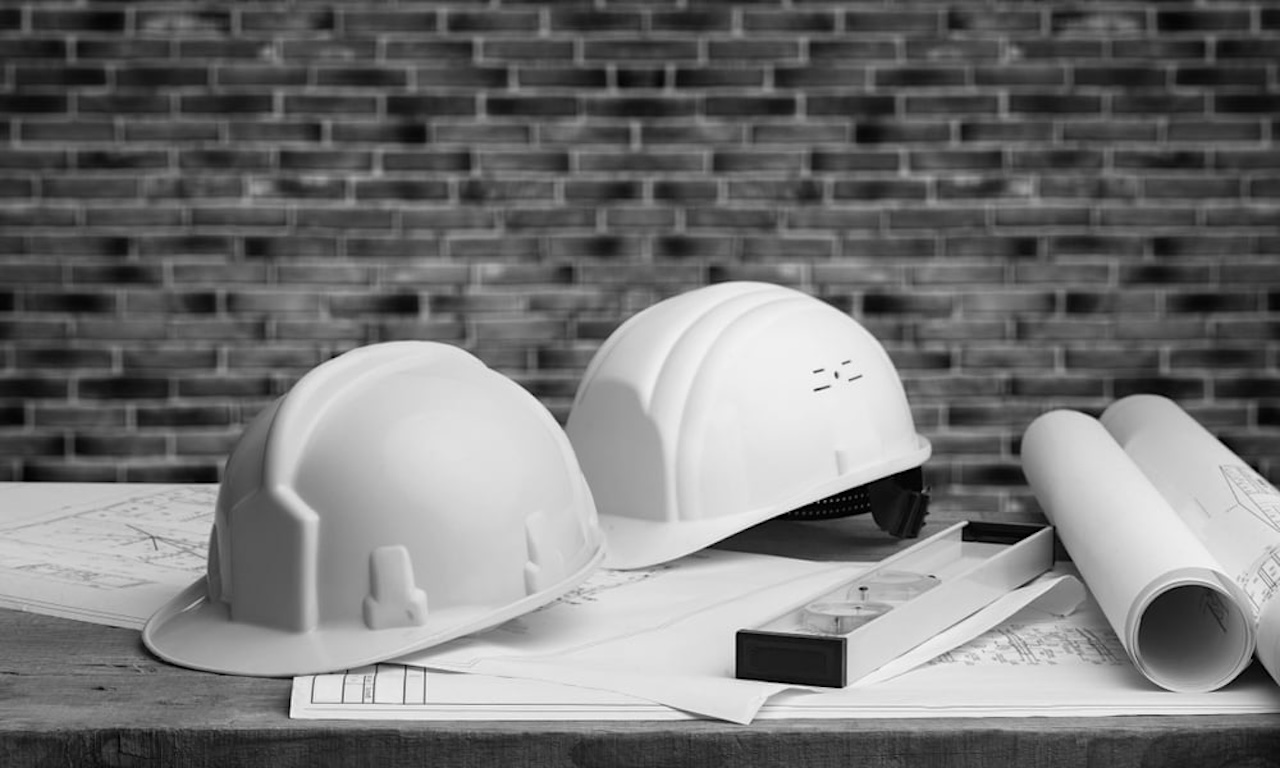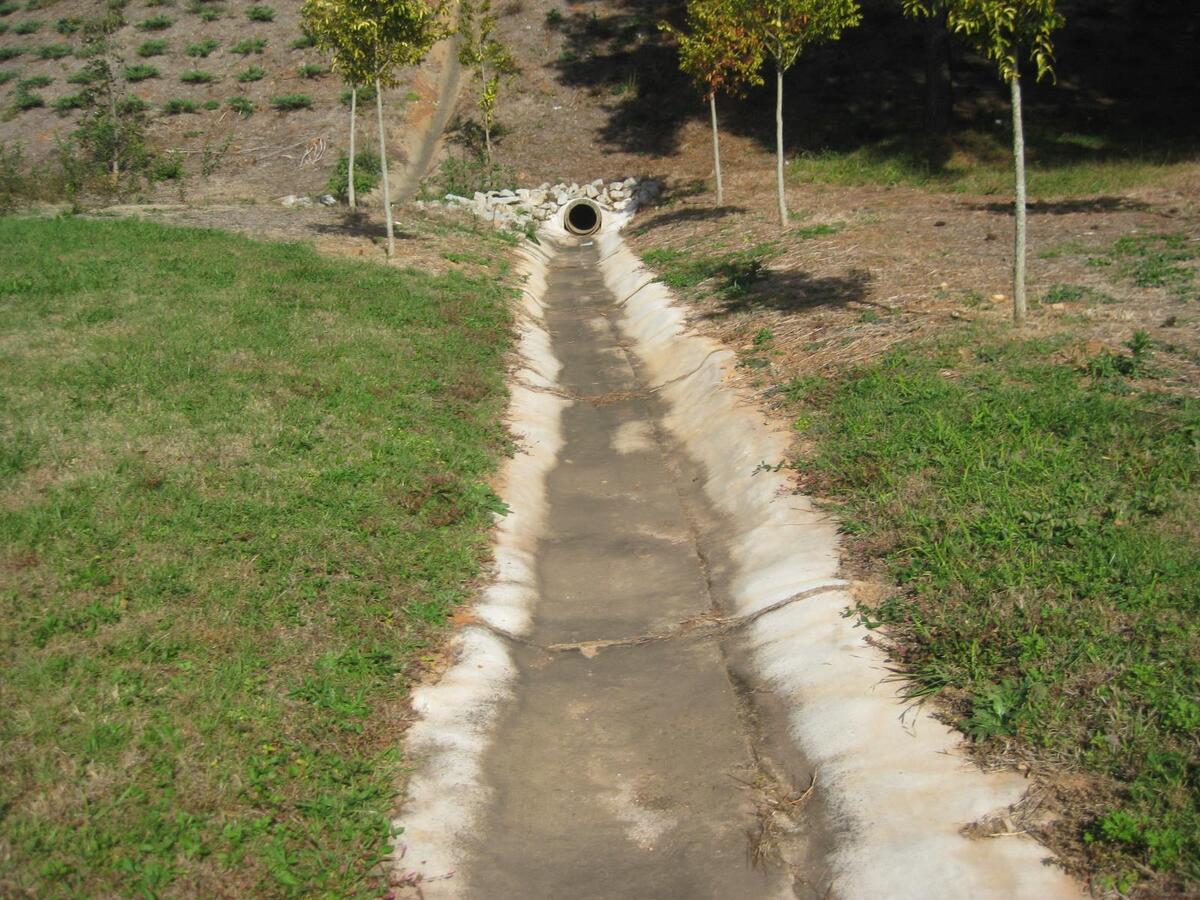Home>diy>Building & Construction>What Is A Substrate In Construction


Building & Construction
What Is A Substrate In Construction
Modified: December 7, 2023
In construction, a substrate refers to the surface or base material that a building is constructed upon, providing stability and support for the structure. Learn more about substrates in building construction.
(Many of the links in this article redirect to a specific reviewed product. Your purchase of these products through affiliate links helps to generate commission for Storables.com, at no extra cost. Learn more)
Introduction
Welcome to the world of construction, where strong foundations and sturdy structures are built to stand the test of time. When it comes to constructing buildings, it’s not just about the bricks and mortar; there is a hidden layer that plays a crucial role in the structural integrity of any construction project. This underlying layer is known as the substrate.
The substrate is an essential component in construction that acts as the base for various building materials, providing stability, support, and a surface for further construction. Without a solid substrate, the longevity and functionality of any construction project would be compromised.
In this article, we will delve into the world of substrates in construction, exploring their definition, importance, types, preparation and installation, common issues, and maintenance. So, let’s dive in and uncover the fascinating world of substrates.
Key Takeaways:
- Substrates are the hidden heroes of construction, providing stability, adhesion, and moisture management. Proper selection, preparation, and maintenance are crucial for ensuring the longevity and durability of building structures.
- Understanding the importance, types, and challenges of substrates is essential for construction professionals. Attention to detail and proactive maintenance can ensure that substrates continue to provide a solid foundation for building materials.
Read more: What Is Pre-Construction In Construction
Definition of Substrate
In the realm of construction, the term “substrate” refers to the underlying surface or layer on which building materials are applied. It acts as the foundation for construction elements, providing a stable and secure base for the structural components.
The substrate can take various forms, depending on the construction project and the intended use of the building. It can be a concrete slab, a wooden subfloor, a metal surface, or even an existing structure that serves as the base for renovations or additions. Essentially, it serves as the groundwork on which the construction process can take place.
One of the key characteristics of a substrate is its ability to support the weight and stress of the materials that are applied to it. Whether it’s the weight of a concrete floor, the pressure exerted by a tiled surface, or the load-bearing capacity of a wall, the substrate must be capable of handling these forces without compromising the integrity of the structure.
In addition to providing a solid foundation, the substrate also functions as a surface for adhesion. Many building materials, such as tiles, flooring, paint, and wallpaper, require a suitable surface to bond to. The texture and condition of the substrate play a crucial role in ensuring proper adhesion and preventing the detachment of these materials over time.
It is important to note that the selection and preparation of the substrate are crucial steps in the construction process. The choice of substrate materials and their compatibility with the intended building materials can significantly impact the durability and longevity of the structure.
Now that we have established the definition of a substrate, let’s explore why this seemingly hidden layer holds such importance in the world of construction.
Importance of Substrates in Construction
Substrates play a vital role in construction projects, providing several key benefits and ensuring the longevity and stability of the structure. Let’s delve into some of the reasons why substrates are of utmost importance:
1. Strength and Stability:
A strong and stable substrate serves as the foundation upon which the rest of the construction materials are applied. It provides the necessary support to bear the weight of the structure and distributes the load evenly. A well-built substrate ensures that the building can withstand external forces, such as wind, earthquakes, or heavy loads, without compromising its integrity.
2. Adhesion and Durability:
The texture and condition of the substrate surface are crucial for proper adhesion and the longevity of applied materials. Whether it’s tiles, flooring, paint, or wallpaper, a suitable substrate ensures that these materials adhere securely and remain intact over time. Without a proper substrate, materials may delaminate, detach, or show signs of wear and tear, compromising the aesthetics and functional aspects of the structure.
Read more: What Is Construction
3. Moisture Management:
Substrates also play a significant role in managing moisture within a building. Moisture can seep through the layers and cause damage, leading to mold growth, rotting, or structural decay. A well-prepared and waterproofed substrate can prevent moisture from penetrating into the building materials, thereby safeguarding the overall structure’s integrity and the occupants’ health.
4. Sound Insulation and Thermal Efficiency:
Substrates can contribute to both sound insulation and thermal efficiency within a building. By using insulating materials or incorporating techniques such as floating floors, proper substrate design can reduce noise transmission between floors and provide a more comfortable living or working environment. Additionally, substrates can provide a level of thermal insulation, reducing heat loss or heat gain and improving energy efficiency.
5. Flexibility for Design and Renovation:
A well-prepared substrate provides flexibility for design choices and future renovations. Whether it’s creating a smooth surface for intricate tiling patterns or preparing a solid base for future extensions, the substrate acts as a canvas for creativity and adaptability. It allows for easy modifications and updates to meet changing demands and preferences over time.
From providing strength and stability to ensuring proper adhesion and moisture management, substrates are integral to the success of any construction project. Now that we understand the importance of substrates, let’s explore the different types of substrates commonly used in construction.
Types of Substrates in Construction
Substrates in construction can vary depending on the type of construction project, building materials, and desired outcomes. Here are some common types of substrates used in construction:
1. Concrete Substrate:
Concrete substrates are widely used in construction for their strength and durability. They are created by pouring concrete into a prepared subgrade or formwork, allowing it to harden and provide a solid base. Concrete substrates are commonly found in foundation walls, floors, and structural elements.
2. Wood Subfloor:
Wood subfloors, typically made of plywood or oriented strand board (OSB), are commonly used in residential and commercial construction. They provide a stable and flat surface for the installation of flooring materials, such as hardwood, laminate, or carpet.
3. Metal Substrate:
Metal substrates, such as steel or aluminum, are often used in industrial and commercial construction. They offer strength, durability, and fire resistance. Metal substrates can be found in roofing systems, wall panels, and structural elements.
4. Masonry Substrate:
Masonry substrates are made from materials like bricks, blocks, or stone. They provide a sturdy and durable surface for various construction applications, including load-bearing walls, facades, and retaining walls.
Read more: What Are Mylars In Construction
5. Existing Structures:
In renovation or remodeling projects, existing structures can serve as substrates. These may include walls, floors, or ceilings that require preparation before applying new finishes or materials.
6. Synthetic Substrates:
Synthetic substrates, such as gypsum boards or cement boards, offer specific characteristics, including fire resistance, moisture resistance, or sound insulation. They are commonly used in interior wall systems, ceilings, or partitions.
7. Composite Substrates:
Composite substrates combine different materials to create a versatile and tailored base. For example, fiber cement boards, which consist of cement and cellulose fibers, provide a durable substrate for exterior cladding systems.
These are just a few examples of the wide range of substrates used in construction. The selection of the appropriate substrate depends on factors such as the intended use, load-bearing requirements, moisture conditions, and compatibility with the desired construction materials.
Now that we have explored the types of substrates, let’s move on to discuss the factors that can affect substrates in construction.
Factors Affecting Substrates in Construction
Several factors can influence the performance and longevity of substrates in construction. Understanding these factors is essential for selecting the appropriate substrate material and ensuring its proper preparation and installation. Here are some key factors that can affect substrates:
Read more: What Is Toenailing In Construction
1. Moisture and Humidity:
Moisture is one of the most significant factors that can impact substrates. It can lead to deterioration, mold growth, or structural damage. Different substrates have varying levels of resistance to moisture, and the choice of substrate should consider the moisture conditions of the environment in which it will be installed.
2. Load-Bearing Requirements:
The load-bearing capacity of a substrate is crucial in determining its suitability for the intended construction project. Heavy materials or equipment may require a stronger and more robust substrate to ensure proper support and stability.
3. Compatibility with Building Materials:
The compatibility of the substrate with the building materials is essential for ensuring adhesion and preventing compatibility issues. Different substrates have varying textures, porosities, and surface conditions. It is important to choose a substrate that is compatible with the construction materials and follows the recommended installation procedures.
4. Substrate Preparation:
The proper preparation of the substrate before installation is critical for its performance. This includes cleaning, leveling, and priming the substrate to create a suitable surface for the application of construction materials. Insufficient substrate preparation can result in poor bond strength and compromised durability.
Read more: What Is A Construction Defect
5. Structural Movement and Settlement:
Structural movement and settlement can affect substrates over time. Changes in temperature, moisture content, or ground conditions can cause substrates to shift or settle. It is important to consider these factors during the design and construction process to ensure that substrates can withstand such movements and minimize the risk of cracks or damage.
6. Environmental Factors:
Environmental conditions like temperature fluctuations, exposure to sunlight, or chemical exposure can impact the performance of substrates. Certain substrates may be more resistant to these factors and offer better long-term durability under specific environmental conditions.
7. Building Codes and Regulations:
Compliance with building codes and regulations is crucial in selecting and installing substrates. Building codes dictate the minimum requirements for substrates based on factors such as fire safety, structural integrity, and accessibility. It is essential to adhere to these guidelines to ensure the overall safety and compliance of the construction project.
By considering these factors and making informed decisions, construction professionals can choose the right substrate and implement proper installation practices, resulting in a solid and reliable foundation for the structure.
With knowledge of the factors affecting substrates, let’s move on to discussing the important steps involved in the preparation and installation of substrates.
Preparation and Installation of Substrates
The preparation and installation of substrates are critical steps in ensuring the success and longevity of any construction project. Here are the important steps involved in preparing and installing substrates:
Read more: What Is Flagging In Construction
1. Assess the Site:
Before starting, it’s crucial to assess the site conditions and understand any potential challenges or limitations. This includes evaluating the existing substrate, checking for moisture issues, ensuring a level surface, and identifying any structural or environmental factors that may impact the preparation and installation process.
2. Clean the Substrate:
The substrate must be thoroughly cleaned to remove any dirt, debris, grease, or old coatings that could prevent proper adhesion. This can be done using appropriate cleaning methods such as sweeping, vacuuming, or using cleaning solutions based on the substrate material.
3. Rectify Imperfections:
If there are any imperfections in the substrate, such as cracks, unevenness, or voids, they should be addressed before installation. This can involve patching or filling the imperfections with suitable materials, such as concrete patching compounds, leveling compounds, or sealants.
4. Ensure Proper Moisture Management:
If moisture is a concern, it’s important to take adequate measures to manage it. This can include applying moisture barriers or waterproofing membranes to prevent moisture from seeping into the substrate and potentially causing damage to the construction materials.
Read more: What Is A Construction Painter
5. Level and Prepare the Surface:
The substrate must be level and smooth to provide a suitable base for the construction materials. This may involve using self-leveling compounds, screeds, or troweling techniques to achieve a flat and even surface. Proper surface preparation ensures proper adhesion and minimizes the risk of cracks or unevenness in the finished construction.
6. Follow Manufacturer Guidelines:
It is crucial to follow the manufacturer’s guidelines for specific substrates and construction materials. This includes recommendations for adhesive application, curing times, temperature requirements, and any other instructions that ensure the proper installation of the substrates.
7. Seek Professional Help if Needed:
If the substrate preparation and installation process requires specialized knowledge or equipment, it is advisable to seek professional help. Experienced contractors or construction professionals can provide expertise and ensure that the substrate is properly prepared and installed.
By following these steps, construction professionals can ensure that the substrate is well-prepared and ready to support the subsequent layers of construction materials. Proper substrate preparation and installation are essential for achieving a durable, stable, and aesthetically pleasing finished construction.
Now that we have covered the preparation and installation process, let’s explore some common issues and challenges that can arise with substrates in construction.
Common Issues and Challenges with Substrates
While substrates play a vital role in construction, they can also present certain challenges and issues that need to be addressed. Here are some common issues and challenges that can arise with substrates:
Read more: What Are Mechanicals In Construction
1. Moisture Problems:
Moisture-related issues, such as water intrusion or high humidity, can damage substrates and affect the performance of construction materials. Improper moisture management can lead to mold growth, deterioration, and compromised structural integrity. Adequate waterproofing and moisture barrier installation are essential to mitigate these issues.
2. Inadequate Surface Preparation:
If the substrate surface is not properly prepared, it can lead to adhesion problems and compromised durability. Insufficient cleaning, uneven leveling, or failure to rectify imperfections can result in poor bond strength and material failure. Proper surface preparation ensures a smooth and strong substrate for the construction materials to adhere to.
3. Structural Movement and Settlement:
Structural movement, settlement, or shifting of the substrate can cause cracks or unevenness in the construction materials. This can be caused by factors such as soil conditions, temperature fluctuations, or improper foundation design. Proper structural engineering and the use of appropriate materials can help minimize the impact of these movements.
4. Compatibility Issues:
Incompatibility between the substrate and the construction materials can lead to adhesion failure or material detachment. Different substrates require specific adhesive systems or surface treatments to ensure proper bonding. It is crucial to consider the compatibility between the substrate and the intended construction materials to prevent these issues.
Read more: What Is An MEP In Construction
5. Environmental Exposure:
Exposure to environmental factors like sunlight, temperature fluctuations, or chemicals can degrade substrates over time. This can result in discoloration, deterioration, or reduced structural integrity. Using substrates that are resistant to these environmental factors or applying appropriate protective coatings can help mitigate these issues.
6. Poor Workmanship:
Poor installation practices, such as improper adhesive application, inadequate curing times, or lack of attention to detail, can compromise the performance of substrates. It is crucial to follow manufacturer guidelines, seek professional expertise if needed, and ensure skilled workmanship to achieve proper substrate installation.
7. Lack of Maintenance:
Failure to provide regular maintenance and care for substrates can lead to deterioration and premature failure. It is essential to follow maintenance recommendations, such as cleaning, sealing, or repairing any damages, to extend the lifespan of the substrates and maintain their performance over time.
By being aware of these common issues and challenges, construction professionals can take proactive measures to address and mitigate any potential risks associated with substrates. With proper attention and care, substrates can continue to provide a solid foundation for the construction materials and ensure the long-term success of the project.
Now let’s move on to the final section of this article, discussing the maintenance and repair of substrates.
Maintenance and Repair of Substrates
Maintaining and repairing substrates is crucial for ensuring their continued performance and the longevity of the construction project. Proper maintenance practices can prevent deterioration, address minor issues, and extend the lifespan of the substrates. Here are some key considerations for the maintenance and repair of substrates:
Read more: What Is An RFQ In Construction
1. Regular Cleaning:
Regular cleaning of the substrate surface helps remove dirt, debris, and other contaminants that can compromise the integrity of the construction materials. Different substrates may require specific cleaning methods or solutions, so it’s important to follow manufacturer guidelines to avoid damaging the substrate.
2. Sealing and Waterproofing:
Applying suitable sealants or waterproofing coatings can help protect substrates from moisture, preventing water intrusion and potential damage. This is particularly important for substrates exposed to high humidity or areas prone to water exposure, such as bathrooms or exterior walls.
3. Inspection and Repair:
Regular inspections should be conducted to identify any signs of damage or deterioration in the substrates. Cracks, unevenness, or other structural issues should be addressed promptly to prevent further damage and maintain the structural integrity. Depending on the severity of the issue, repairs may involve patching, reinforcement, or replacement of the affected substrate sections.
4. Professional Maintenance Services:
In some cases, it may be necessary to seek professional maintenance services, particularly for complex or specialized substrates. This can ensure that the maintenance and repair work is done accurately and effectively, maximizing the performance and lifespan of the substrate.
Read more: What Is GMP Construction
5. Surface Reconditioning:
In situations where the substrate surface has deteriorated or been damaged, reconditioning methods such as sanding, grinding, or resurfacing can be employed. This helps restore the substrate surface to its original condition, ensuring a smooth and even base for construction materials.
6. Proactive Monitoring:
Regularly monitoring the condition of the substrates can help identify potential issues before they become major problems. By staying proactive and addressing any signs of deterioration or damage early on, construction professionals can prevent more extensive repairs or replacement in the future.
It’s important to note that the maintenance and repair requirements of substrates can vary based on factors such as the substrate material, environmental conditions, and the type of construction materials applied on top. Following manufacturer guidelines, industry best practices, and seeking professional advice when necessary can ensure that the maintenance and repair efforts are carried out effectively.
With proper maintenance and timely repairs, substrates can continue to provide a solid foundation for the construction materials and contribute to the overall longevity and performance of the structure.
Now that we’ve covered the importance, types, preparation, installation, common issues, and maintenance of substrates, we have a more comprehensive understanding of their significant role in construction projects. Proper selection, preparation, and care of substrates contribute to the success and durability of every construction endeavor.
By giving substrates the attention they deserve, we can ensure the buildings and structures we construct stand tall and strong for years to come.
Conclusion
In the world of construction, substrates are the unsung heroes that provide the necessary foundation and support for the materials used in building projects. These hidden layers play a crucial role in ensuring the durability, stability, and longevity of the overall structure.
Throughout this article, we have explored the definition of substrates, their importance in construction, the various types commonly used, factors that can affect their performance, the preparation and installation process, common issues and challenges, as well as maintenance and repair considerations.
From concrete slabs and wood subfloors to metal surfaces and existing structures, substrates come in various forms to cater to different construction needs. They provide the strength, adhesion, and stability required for the successful application of building materials, ensuring that structures can withstand external forces and remain in optimal condition.
Moisture management, load-bearing requirements, compatibility with materials, and proper preparation are among the key factors that need to be considered when working with substrates. Attention to detail, adherence to manufacturer guidelines, and skilled workmanship are vital in the process of preparing and installing substrates to achieve the desired results.
However, substrates are not exempt from challenges. Moisture issues, insufficient surface preparation, structural movement, and compatibility problems can pose potential risks. Regular maintenance, inspection, and timely repairs are necessary to keep substrates in excellent condition and address any signs of deterioration or damage before they escalate.
In conclusion, substrates are the hidden foundation beneath the visible beauty of our buildings. They provide structural integrity, support various construction materials, and play a crucial role in ensuring the robustness and longevity of the structures we create. By paying attention to substrates, selecting appropriate materials, and following proper installation and maintenance practices, we can construct buildings that stand the test of time.
So, let’s continue to appreciate the important role of substrates in construction and give them the attention they deserve, knowing that they are the solid base upon which our architectural dreams come to life.
Frequently Asked Questions about What Is A Substrate In Construction
Was this page helpful?
At Storables.com, we guarantee accurate and reliable information. Our content, validated by Expert Board Contributors, is crafted following stringent Editorial Policies. We're committed to providing you with well-researched, expert-backed insights for all your informational needs.





0 thoughts on “What Is A Substrate In Construction”